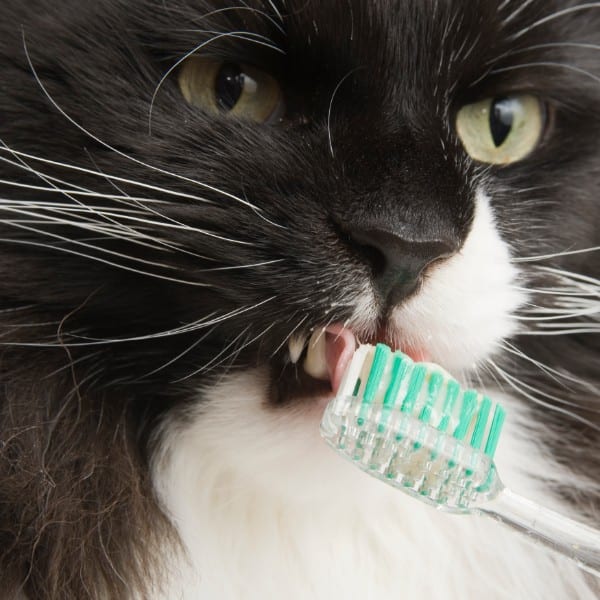A Closer Look at Pet Dental Care: How to Brush Your Pet’s Teeth at Home

Many pet owners are still surprisingly ill at ease when it comes to pet dental care. Sure, like other new adventures, brushing your pet’s teeth might seem a bit daunting at first. We can assure that with equal measures of patience, practice and determination, you’ll be setting your pet up for a brighter, healthier future. What could be better than that?
Forming a New Habit
Brushing our own teeth is something we do every day (at least twice). In fact, it’s so much a part of our day that to skip it just feels downright wrong. Well, getting to this point with your pet can take some time, but if you are consistent the process of adopting the habit will go by quickly and easily. Before you know it, brushing your pet’s teeth will be just another thing you do together.
Avoid Health Problems
Heart, liver, and kidney disease can occur when oral bacteria gets into the bloodstream. For animals, every time they eat something they introduce bacteria to their bodies. Bad breath, yellow teeth, and even tumors or cysts also result from poor oral hygiene. Preventing these major issues and reducing your pet’s pain are big motivators for routine pet dental care.
We take time at every wellness exam to peer into the mouth, but a professional exam and cleaning help us determine the possible extent of damage or disease.
Early as Possible
It’s a good idea to introduce brushing to your pet as soon as possible. When pets are exposed to tooth brushing from an early age their chances of growing accustomed to the feeling are pretty high. However, all animals can learn (with your caring guidance) to adapt to having their teeth and gums brushed.
Praise, treats, and other reassurances help to make it a positive experience!
For your success, we offer these tips:
- Purchase pet toothpaste (never products designed for people) in flavors you think your pet will like, as well as a toothbrush sized for your pet’s mouth and teeth.
- Establish a good time to brush your pet’s teeth, such as after a walk or a meal. Aim for every single day, a few minutes on each side.
- Take your time; don’t rush your pet into the activity.
- Increase your pet’s exposure to toothpaste and the toothbrush every time you take them out.
- You may have to start by applying gentle pressure with your finger over the teeth and gums then graduating to the brush over time.
- Slowly but firmly move the brush in small circular motions over the hum line and teeth. Pay close attention to the back molars where plaque and tartar are often found.
- Reward your pet every single time.
A+ Pet Dental Care
In addition to brushing, there are modifications to your pet’s diet that support pet dental care, such as chews, prescription food, and other supplemental products. Please let us know if you think your pet would benefit from these.
Pet dental care is one of our highest priorities. Our veterinarians and staff members are available to help you with any questions or concerns you may have.
Share This Article
About
Schertz Animal Hospital
Since 1976, Schertz Animal Hospital has offered the greater San Antonio area outstanding pet care. Our state-of-the-art animal hospital in Schertz, TX compliments our stress-free handling and experienced veterinary staff. Make an appointment online or give us a call at (210) 659-0345 today!
